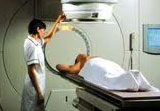Cervical Cancer Radiotherapy
The cervix is the section of the female body where the uterus is connected to the vagina. In the past decades, thousands of women have developed cancer in this area of their body, perhaps without having any type of symptoms. This is known as cervical cancer, which can be avoided by taking proper precautions such as timely medical checkups. Moreover, women that have already been diagnosed with the disease can opt to have cervical cancer radiotherapy, along with surgery to remove the cancerous mass. Statistics by the American Cancer Society have shown that the death rate due to cervical cancer has decreased, mainly due to effective forms of prevention.
External & Internal Radiotherapy
When performing cervical cancer radiotherapy, oncologists usually choose from two types of therapy: external and internal radiation. Your team of specialists will have to study how far advanced your cancer is and what other complications may arise, before choosing the correct treatment for you. If they choose to administer external radiation, you will most likely have it done on an outpatient basis, meaning you would go in and out on the same day. The majority of cervical cancer patients have one treatment done every day for about five to six weeks, and even though an external beam of radiation will be attacking your cancer, you won’t feel any discomfort during the session. On the other hand, internal radiation works with a small bead or recipient that contains radiation; it’s placed inside the uterus in order for it to fight off the cancerous mass.
Radiotherapy Side Effects
Just as any other type of treatment, cervical cancer radiotherapy comes with numerous side effects. Nonetheless, this doesn’t mean that you will experience all of them, or even one of them at all. Every person is unique and different and they may react differently to the treatment, that’s why you see some people suffer severe side effects, while others don’t feel any type of discomfort at all. Keep in mind that when cervical cancer radiotherapy takes place, your body is trying to assimilate the changes that are happening, and this may trigger some type of defense mechanism. A few of the most common side effects are:
- Skin issues–receiving radiation can affect your skin depending on the level or fractioning of radiation. Your skin may appear sunburnt and may get red and sensitive.
- Lack of appetite–you may feel exhausted and with no desire to eat.
- Fatigue– if you feel extremely tired, make sure to rest enough.
Preventing Cervical Cancer
The reports published by the American Cancer Society reveal for the current year the deaths related to cervical cancer are expected to be merely over 4,000. This is a low number when compared to the mortality rates of other types of cancer. Furthermore, death rates due to cervical cancer have dramatically dropped in the last decades because of the proper screening women have started to practice. Physicians recommend women to have a pap smear done at least once a year, because this will detect abnormal cells before cancer even develops.

